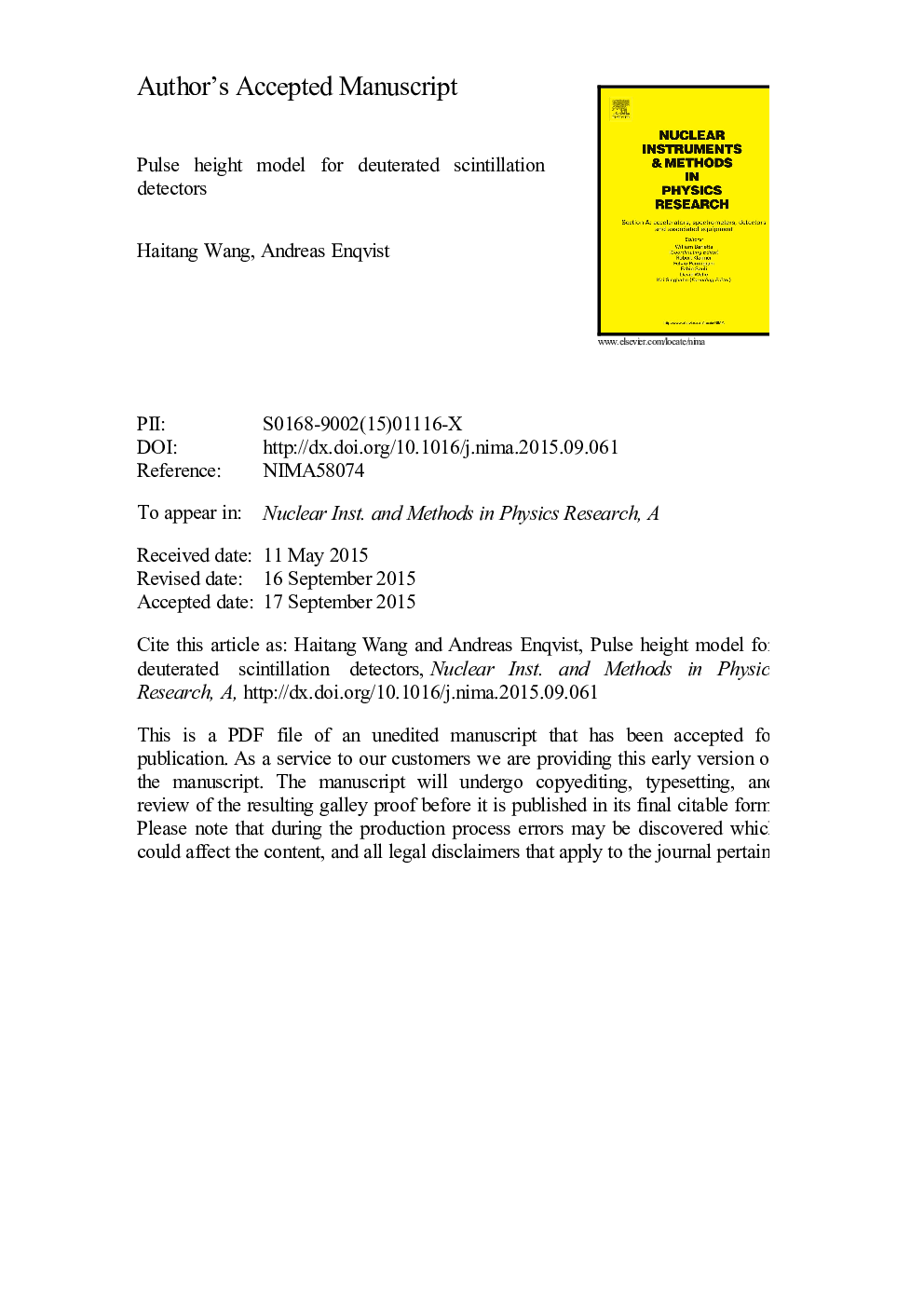| Article ID | Journal | Published Year | Pages | File Type |
|---|---|---|---|---|
| 8171630 | Nuclear Instruments and Methods in Physics Research Section A: Accelerators, Spectrometers, Detectors and Associated Equipment | 2015 | 32 Pages |
Abstract
An analytical model of light pulse height distribution for finite deuterated scintillation detectors is created using the impulse approximation. Particularly, the energy distribution of a scattered neutron is calculated based on an existing collision probability scheme for general cylindrical shaped detectors considering double differential cross-sections. The light pulse height distribution is analytically and numerically calculated by convoluting collision sequences with the light output function for an EJ-315 detector from our measurements completed at Ohio University. The model provides a good description of collision histories capturing transferred neutron energy in deuterium-based scintillation materials. The resulting light pulse height distribution details pulse compositions and their corresponding contributions. It shows that probabilities of neutron collision with carbon and deuterium nuclei are comparable, however the light pulse amplitude due to collisions with carbon nuclei is small and mainly located at the lower region of the light pulse distribution axis. The model can explore those neutron interaction events that generate pulses near or below a threshold that would be imposed in measurements. A comparison is made between the light pulse height distributions given by the analytical model and measurements. It reveals a significant probability of a neutron generating a small light pulse due to collisions with carbon nuclei when compared to larger light pulse generated by collisions involving deuterium nuclei. This model is beneficial to understand responses of scintillation materials and pulse compositions, as well as nuclei information extraction from recorded pulses.
Keywords
Related Topics
Physical Sciences and Engineering
Physics and Astronomy
Instrumentation
Authors
Haitang Wang, Andreas Enqvist,
